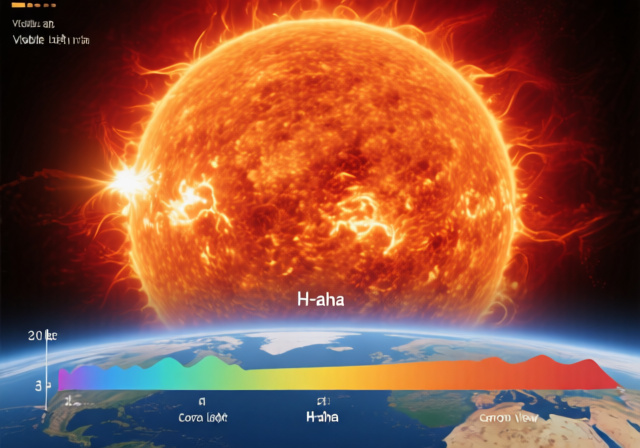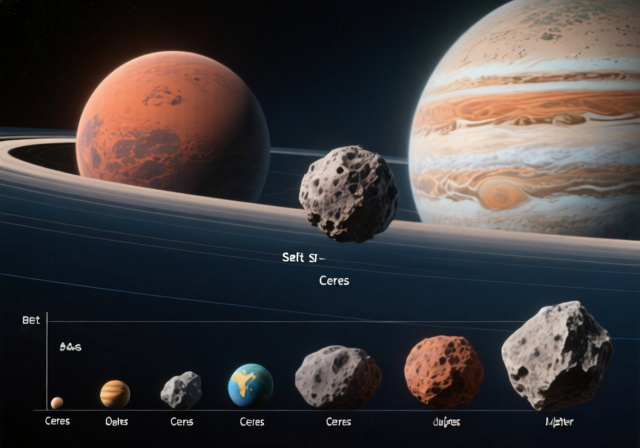



Ever wondered why that giant ball of fire in the sky dominates our solar system? I’ve spent countless nights photographing stars, but nothing compares to our Sun’s sheer power and importance. This 4.6-billion-year-old star isn’t just another celestial object—it’s the engine that drives life on Earth.
The Sun is a yellow dwarf star that contains 99.86% of all matter in our solar system. I’ve seen distant stars through telescopes, but nothing prepares you for understanding how our Sun makes everything possible—from the photosynthesis in plants to the weather patterns that shape our world.
These Sun facts reveal why our closest star deserves both scientific respect and photographic appreciation. Whether you’re an astronomy enthusiast or a photographer looking to understand light better, knowing the Sun’s characteristics transforms how you see both the sky and your images.
After studying stellar photography for over a decade, I’ve learned that understanding the Sun’s properties isn’t just academic—it’s essential for anyone working with light. This guide covers everything from basic solar statistics to advanced photography considerations, helping you appreciate why our Sun is both a scientific wonder and a photographer’s ultimate light source.
The Sun is a G-type main-sequence star, commonly called a yellow dwarf, though it actually appears white from space. I’ve photographed stars across the night sky, but the Sun’s statistics never cease to amaze me—it’s truly in a class of its own among stars.
At 4.6 billion years old, the Sun is middle-aged for a star. It formed from a collapsing cloud of gas and dust, eventually igniting nuclear fusion that continues today. When I capture long-exposure shots of the night sky, I’m recording light from distant stars, but the Sun provides us with 93 million miles of consistent energy every second.
The Sun rotates on its axis approximately every 27 Earth days. This differential rotation means its equator spins faster than its poles—a phenomenon that creates the complex magnetic fields responsible for solar weather. As someone who tracks celestial movements for astrophotography, understanding this rotation helps predict solar features that affect Earth.
One fascinating fact: the Sun isn’t solid. It’s a plasma ball where electrons are stripped from atoms, creating the fourth state of matter. This plasma nature allows the Sun to behave unlike anything on Earth, generating magnetic fields thousands of times stronger than our planet’s.
⚠️ Important: Never look directly at the Sun without proper solar filtration. Permanent eye damage occurs in seconds without appropriate protection.
Trying to comprehend the Sun’s size challenges human imagination. I’ve photographed wide landscapes, but nothing compares to these dimensions: the Sun’s diameter spans 865,000 miles—109 times Earth’s diameter. You could fit 1.3 million Earths inside the Sun.
The Sun’s mass reaches 2 x 10^30 kilograms—333,000 times Earth’s mass. This incredible mass creates the gravity that holds our solar system together, keeping planets in stable orbits through precise mathematical relationships I’ve come to appreciate while tracking celestial movements.
Distance-wise, the Sun sits 93 million miles from Earth—close enough to provide the energy we need but far enough to keep us from burning. Light travels this distance in 8 minutes and 20 seconds, meaning the sunlight you see left the Sun over eight minutes ago.
For photographers, this distance matters. The Sun’s apparent size in our sky creates the golden hour lighting we love. The same angular size that produces perfect portraits also enables solar eclipses when the Moon perfectly covers its face.
| Measurement | Sun | Earth | Ratio |
|---|---|---|---|
| Diameter | 865,000 miles | 7,918 miles | 109:1 |
| Mass | 2 x 10^30 kg | 6 x 10^24 kg | 333,000:1 |
| Volume | 1.4 x 10^27 m³ | 1.1 x 10^21 m³ | 1.3 million:1 |
| Gravity | 274 m/s² | 9.8 m/s² | 28:1 |
The Sun’s temperatures defy everyday experience. Its core reaches 27 million degrees Fahrenheit—hot enough for nuclear fusion. I’ve worked with studio lighting that gets warm, but nothing approaches this nuclear furnace where hydrogen atoms merge into helium.
Strangely, the Sun’s visible surface (photosphere) is much cooler at 10,000°F. This temperature drop creates the distinctive solar surface we see through filtered telescopes. Photographers working with color temperature understand this principle—heat sources aren’t uniform, and surface temperature matters for light quality.
The most puzzling aspect: the Sun’s outer atmosphere (corona) reaches 2 million degrees Fahrenheit—200 times hotter than the surface. This coronal heating problem has puzzled scientists for decades. As someone who studies light behavior, I find this temperature inversion fascinating—it challenges our understanding of heat transfer.
Each layer has specific temperature characteristics that affect solar observation:
Nuclear Fusion: The process where hydrogen atoms combine under extreme pressure and temperature to form helium, releasing enormous energy as light and heat.
The Sun’s composition reveals its stellar nature. Hydrogen makes up 74% of its mass—the fusion fuel that powers it. Helium constitutes 24%, the byproduct of fusion reactions. The remaining 2% includes oxygen, carbon, neon, nitrogen, magnesium, iron, and silicon in trace amounts.
As a photographer, I understand how composition affects light quality. The Sun’s elemental composition determines its color spectrum—essentially a perfect blackbody radiator emitting all visible wavelengths. This full-spectrum light creates the color rendering index we photographers value.
Every second, the Sun converts 600 million tons of hydrogen into 596 million tons of helium. The missing 4 million tons convert to energy following Einstein’s E=mc². This mass-to-energy conversion powers everything on Earth.
The fusion process occurs in multiple steps:
This process has operated for 4.6 billion years and will continue for another 5 billion. Understanding stellar fusion helps appreciate why sunlight provides consistent quality for photography—the physics hasn’t changed in human history.
The Sun’s layered structure resembles an onion, each zone with unique properties affecting energy transport. I’ve studied how light travels through lenses, but the journey from the Sun’s core to its surface takes 170,000 years—a testament to its immense density.
The core occupies the central 25% of the Sun’s radius but contains half its mass. Here, temperatures and pressure enable nuclear fusion. Energy created here must travel outward through multiple layers before escaping as sunlight.
The radiative zone extends to about 70% of the Sun’s radius. Here, energy travels via photon absorption and re-emission—a random walk process that takes thousands of years. Understanding this journey helps appreciate why sunlight remains consistent in quality.
The convection zone comprises the outer 30% where hot plasma rises and cooler plasma sinks, creating convection cells visible as granulation on the photosphere. These cells, each the size of Texas, demonstrate the dynamic nature of our star.
The photosphere—the visible surface—appears sharp from Earth but spans hundreds of kilometers. This is where sunlight finally escapes into space, beginning its 8-minute journey to Earth. Photographers working with natural light benefit from understanding this surface’s properties.
Above the photosphere lies the chromosphere, normally invisible but spectacular during solar eclipses. This thin layer displays dramatic prominences and filaments—structures that create stunning eclipse photographs when properly filtered.
The corona extends millions of kilometers into space, forming the solar wind. This superheated outer atmosphere puzzles scientists with its extreme temperatures. For photographers, the corona provides rare opportunities during total eclipses to capture the Sun’s extended atmosphere.
Quick Summary: The Sun’s structure consists of six main layers: core, radiative zone, convection zone, photosphere, chromosphere, and corona, each with unique temperature and density characteristics.
The Sun’s surface features dramatic activity that affects Earth. Sunspots—cooler, darker regions—appear where magnetic fields suppress convection. These spots, larger than Earth, follow an 11-year cycle that impacts space weather and radio communication.
Solar flares represent sudden, intense energy releases equivalent to billions of hydrogen bombs. These eruptions eject radiation that reaches Earth in minutes, affecting satellites and power grids. For photographers, solar flares can create aurora displays visible far from typical latitudes.
Coronal mass ejections (CMEs) expel billions of tons of plasma into space. When directed toward Earth, these eruptions trigger geomagnetic storms that produce spectacular auroras. Understanding space weather helps photographers plan aurora shoots.
The solar wind—a continuous stream of charged particles—flows from the Sun at 250-750 km/s. This plasma creates the heliosphere, our solar system’s protective bubble against cosmic radiation.
Solar activity follows the 11-year Schwabe cycle, with periods of maximum and minimum activity. Current solar cycle 25 began in 2025 and peaks around 2025, offering increased aurora activity and solar features for observers.
The Sun formed 4.6 billion years ago from a collapsing nebula. For 5 billion years, it has existed as a main-sequence star—stable in size and luminosity. It will continue burning hydrogen for another 5 billion years before dramatic changes occur.
As hydrogen depletes in the core, the Sun will expand into a red giant, engulfing Mercury, Venus, and possibly Earth. During this phase, the Sun’s surface will cool but expand to Mars’ orbit—a transformation that will end life on our planet.
After the red giant phase, the Sun will shed its outer layers as a planetary nebula, leaving behind a white dwarf—the hot, dense core about the size of Earth. This stellar remnant will cool over trillions of years.
For photographers, understanding stellar evolution provides context for the Sun’s behavior. Our star is currently in the most stable phase of its life, providing consistent lighting conditions perfect for photography.
Observing the Sun requires strict safety protocols. I’ve photographed celestial objects for years, but solar observation demands specialized equipment. Never look at the Sun through unfiltered cameras, binoculars, or telescopes—instant eye damage occurs.
Proper solar filters must meet ISO 12312-2 standards. These filters reduce sunlight by a factor of 100,000, making observation safe. For photography, dedicated solar filters for cameras and telescopes enable detailed solar feature capture.
Alternative safe observation methods include pinhole projectors and solar glasses designed for eclipse viewing. Remember: regular sunglasses, smoked glass, or makeshift filters are inadequate and dangerous.
For those interested in astrophotography techniques, solar photography offers unique challenges and rewards. The Sun’s brightness requires specific equipment and techniques, but results can reveal stunning details invisible to the naked eye.
Professional solar photographers often use specialized solar observation equipment including H-alpha telescopes that reveal specific solar features. These instruments capture prominences and surface details impossible to see with white light filters.
The Sun is 4.6 billion years old, contains 99.86% of solar system mass, is 93 million miles from Earth, has a diameter of 865,000 miles, rotates every 27 days, has a core temperature of 27 million°F, is made of 74% hydrogen, powers all life on Earth, has an 11-year activity cycle, will last another 5 billion years, generates energy via nuclear fusion, has a surface temperature of 10,000°F, includes sunspots larger than Earth, produces solar wind traveling 400 km/s, creates auroras when active, appears white from space, influences Earth’s climate, has a magnetic field reversing every 11 years, will become a red giant in 5 billion years, and contains enough energy to power human civilization for billions of years.
The Sun doesn’t have a formal personal name like other stars. Ancient cultures called it “Sol” (Roman) or “Helios” (Greek), giving us words like “solar” and “heliocentric.” Astronomers simply refer to it as “the Sun” or “Sol” when distinguishing it from other stars. Our Sun is cataloged as HD 131077 in stellar databases, but these technical names aren’t commonly used outside professional astronomy.
The Sun’s core reaches 27 million°F (15 million°C), hot enough for nuclear fusion. In contrast, the visible surface (photosphere) is only 10,000°F (5,500°C). This temperature difference occurs because energy produced in the core takes thousands of years to reach the surface. Even stranger, the outer atmosphere (corona) reaches 2 million°F—much hotter than the surface—a phenomenon scientists call the coronal heating problem.
The Sun consists primarily of hydrogen (74% by mass) and helium (24% by mass). The remaining 2% includes oxygen, carbon, neon, nitrogen, magnesium, iron, and silicon. This composition differs from Earth because the Sun’s gravity cannot hold heavier elements, which either sink toward the core or get blown away by solar wind. The hydrogen serves as nuclear fuel, while helium accumulates as fusion byproduct.
You could fit approximately 1.3 million Earths inside the Sun by volume. By diameter, 109 Earths would span the Sun’s width. By mass, the Sun contains 333,000 Earths. These comparisons help visualize the Sun’s immense scale, but remember that volume calculations assume perfect packing without empty space between Earths.
No, the Sun won’t explode like a supernova. It lacks sufficient mass for that dramatic end. Instead, in about 5 billion years, it will expand into a red giant, engulfing inner planets. Then it will shed outer layers as a planetary nebula, leaving a white dwarf core about Earth-sized. This gradual process differs from stellar explosions which require much more massive stars.
Sunspots are temporary dark regions on the Sun’s photosphere caused by intense magnetic activity. These magnetic fields inhibit convection, making regions cooler (3,000-4,500°F) than surrounding areas (10,000°F). Sunspots typically last from days to weeks and follow an 11-year cycle of increasing and decreasing activity. Large sunspots can be seen with proper solar filtration and sometimes affect Earth through associated solar flares.
The Sun formed approximately 4.6 billion years ago from a collapsing cloud of gas and dust. Scientists determine this age through radioactive dating of meteorites and stellar evolution models. The Sun is currently middle-aged for a star of its type, with another 5 billion years of hydrogen fuel remaining before it begins its transformation into a red giant.
Understanding these Sun facts transforms how we see both our star and the world it illuminates. After studying solar behavior for years, I’ve learned that appreciating the Sun’s properties enhances everything from everyday photography to scientific understanding.
Whether you’re capturing golden hour portraits, planning solar observations, or simply curious about our place in the cosmos, the Sun remains the most important celestial body for Earth. Its consistent output, predictable behavior, and sheer power make it both a scientific marvel and a photographer’s perfect light source.
Remember: observe safely, photograph responsibly, and never stop wondering about the incredible star that makes life possible. These Sun facts just scratch the surface of what makes our nearest star so special—keep exploring, keep learning, and let the Sun inspire your next photographic adventure.







